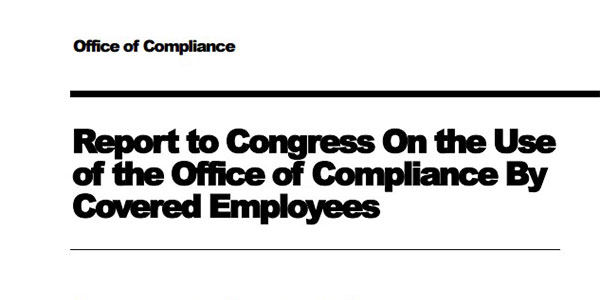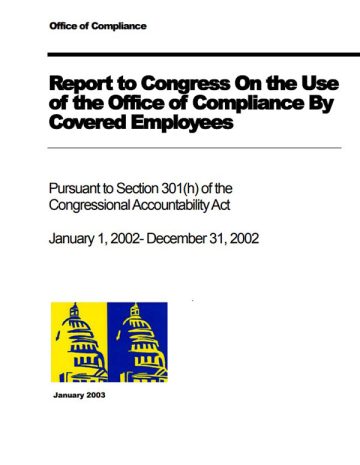INTRODUCTION
The Congressional Accountability Act (CAA) generally applies provisions of eleven federal labor and employment laws to over 30,000 covered Legislative Branch employees and employing offices. The Office of Compliance (Office), an independent agency in the Legislative Branch, was established by the CAA to administer and enforce the Act and provide a process for the timely and confidential resolution of workplace disputes. Section 301(h) of the CAA requires that the Office of Compliance:
“. . . compile and publish statistics on the use of the Office by covered employees, including the number and type of contacts made with the Office, on the reason for such contacts, on the number of covered employees who initiated proceedings with the Office under this Act and results of such proceedings, and on the number of covered employees who filed a complaint, the basis for the complaint, and the action taken on the complaint.”
This report provides a brief overview of the authority and responsibilities of the Office of Compliance and statistics concerning the contacts and proceedings initiated by covered employees. In accordance with the CAA’s strict confidentiality requirements, the information provided in this report is of a statistical nature only.
OFFICE OF COMPLIANCE AUTHORITY AND RESPONSIBILITIES
The Office of Compliance protects the safety, health, and workplace rights of employees of the Congress and the Legislative Branch. Established by the Congressional Accountability Act of 1995, the Office is an independent and neutral agency which provides an impartial dispute resolution process and educates employees and employing offices about their rights and responsibilities under the Act.
The CAA applies rights and protections of title VII of the Civil Rights Act of 1964; the Age Discrimination in Employment Act of 1967; title I of the Americans with Disabilities Act of 1990; the Rehabilitation Act of 1973; the Family and Medical Leave Act of 1993; the Fair Labor Standards Act of 1938; the Employee Polygraph Protection Act of 1988; the Worker Adjustment and Retraining Notification Act; Chapter 43 of title 38 of the U.S. Code (relating to uniformed services employment and reemployment); the Americans with Disabilities Act of 1990 relating to public services and accommodations; the Occupational Safety and Health Act of 1970; and Chapter 71 of title 5 of the U.S. Code (relating to federal service labor management relations).

